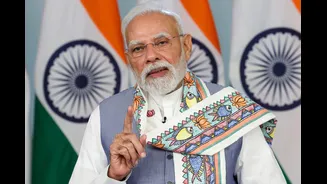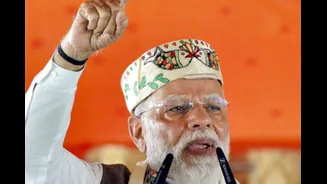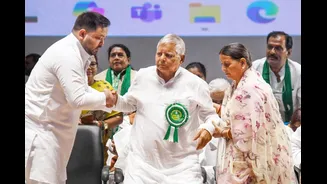Political Landscape Unveiled
The Bihar election of 2025 is poised to be a pivotal event, set against a backdrop of complex political dynamics. Key players, including established parties
and emerging contenders, are likely to vie for influence and power, potentially reshaping the state's political arena. Historical trends suggest that caste affiliations, economic policies, and governance issues will heavily influence voter decisions. The strategic positioning of various parties, along with the evolving nature of alliances, will significantly affect the electoral outcome. Moreover, the impact of national policies and sentiments will undoubtedly reverberate in Bihar, further complicating the political environment. Understanding these interwoven elements is essential for forecasting the election's final results.
Key Issues at Stake
The 2025 Bihar elections will see a wide array of critical issues that voters will consider. The state's economic progress, including employment opportunities and infrastructure projects, will play a significant role. Social justice concerns, especially those related to caste-based discrimination and affirmative action policies, are also expected to feature prominently in political debates. Furthermore, the effectiveness of governance and public services, particularly in areas like healthcare and education, is likely to be a major focus. The handling of law and order, alongside the government's approach to agriculture and rural development, will be critical. The way political parties address these multifaceted challenges will undoubtedly influence their appeal to the electorate and the overall results.
Major Players Examined
The 2025 election in Bihar will see several key players vying for dominance. Traditional political parties, such as the ruling coalition and prominent opposition groups, are expected to play substantial roles in the elections. Leaders from these parties will likely spearhead campaigns and seek to attract a broad voter base by highlighting their accomplishments and future plans. Moreover, the presence of regional and smaller parties could add complexity to the political landscape, potentially influencing the outcome through strategic alliances or vote splitting. The individual strategies and campaign efforts of each party, including their approaches to candidate selection, messaging, and public outreach, will be crucial in determining their success.
Potential Electoral Outcomes
Predicting the outcomes of the 2025 Bihar elections requires analysis of several factors. Voter turnout, particularly in specific demographics and regions, could be a key determinant. The ability of political parties to mobilize their support base and influence undecided voters will also be crucial. Possible outcomes range from a continuation of the current political alignment to a complete reshuffling of the power dynamics. Another key consideration is the potential for post-election coalitions and alliances, which could significantly alter the governing landscape. Anticipating these varied scenarios provides a framework for comprehending the long-term impact of the elections on Bihar's political and social trajectory.
Historical Context Matters
To understand the 2025 Bihar elections, it is essential to consider the state's historical political background. Examining previous election results, analyzing voting patterns, and assessing the evolution of political alliances over time can provide invaluable insights. The impact of past political movements and key events on the current electoral landscape should be taken into account. Understanding the historical context helps to elucidate the enduring nature of certain political trends and the emergence of new dynamics. Reviewing past election cycles offers a valuable perspective on the evolution of Bihar's political landscape.















